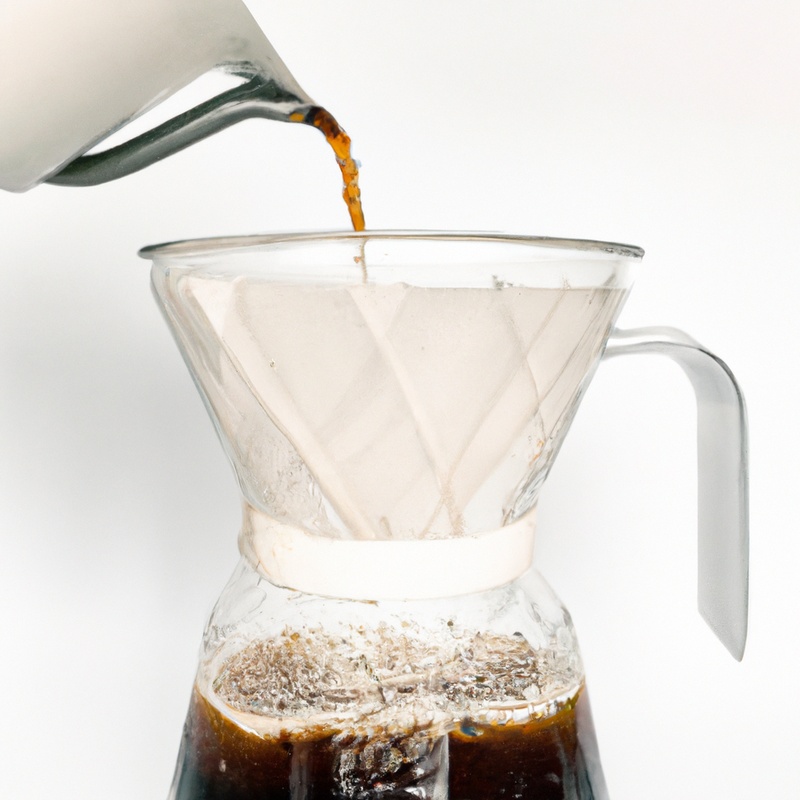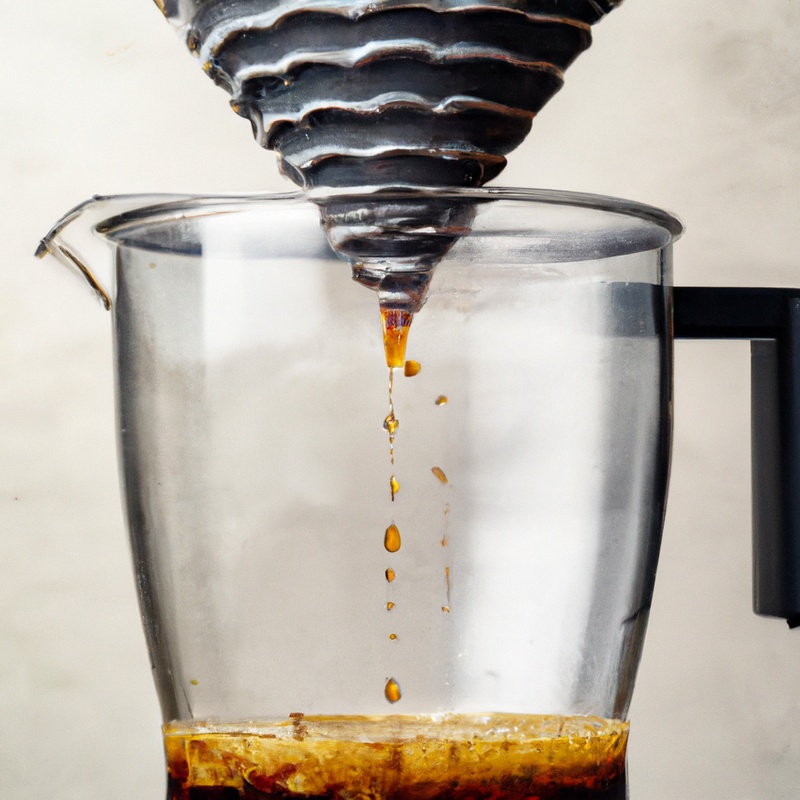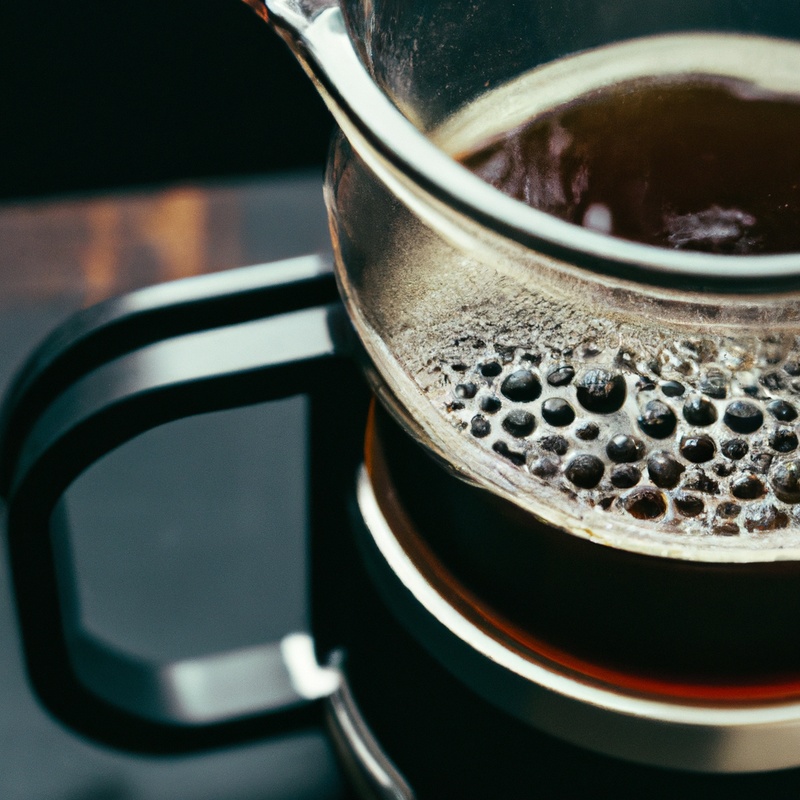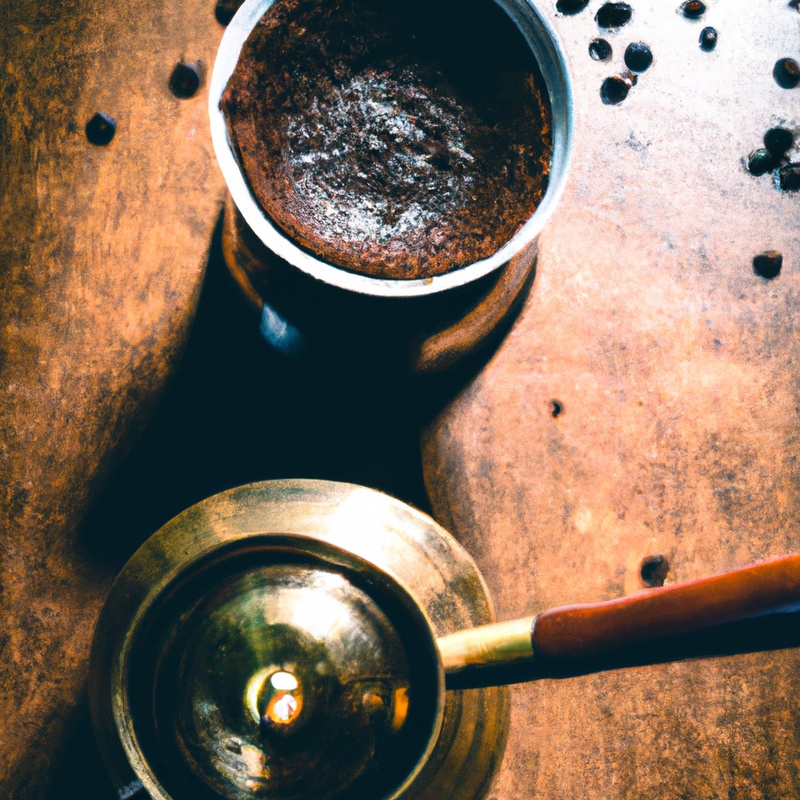Key Takeaways:
- Using a metal filter with a Kalita Wave dripper allows for a richer and fuller-bodied coffee.
- A gooseneck kettle provides better control over water flow, resulting in a more precise extraction.
- Grind size and water temperature play a critical role in achieving a balanced and flavorful cup of coffee.
- Experimentation is key to finding the perfect brewing method and recipe that suits your taste preferences.
Are you tired of mediocre coffee? Ready to elevate your brewing game and unlock the full potential of your coffee beans?
Look no further, because we’ve got the perfect combination for a stellar cup of joe: the Kalita Wave dripper with a metal filter and a gooseneck kettle.
This powerful trio will revolutionize your brewing experience and deliver a rich, flavorful brew every time. In this article, we’ll walk you through the step-by-step process, from preparing the equipment to understanding extraction and brew time.
Get ready to become a coffee brewing master and impress your taste buds!
| Steps | Details |
| 1. Grind | Grind coffee beans to medium-fine consistency. |
| 2. Preheat | Preheat the Kalita Wave dripper and the gooseneck kettle. |
| 3. Rinse | Rinse the filter with hot water to remove any papery taste. |
| 4. Add Coffee | Place the ground coffee in the dripper. |
| 5. Bloom | Pour a small amount of hot water over the coffee grounds to saturate them. |
| 6. Pour | Slowly pour hot water in a circular motion over the coffee. Maintain a steady and controlled pour. |
| 7. Steep | Allow the coffee to steep for about 2-3 minutes. |
| 8. Serve | Once the coffee has finished dripping, remove the dripper and enjoy your brewed coffee! |
Using a metal filter in a Kalita Wave dripper
Using a metal filter in a Kalita Wave dripper enhances the coffee’s flavor. Make sure to properly clean and maintain the metal filter to ensure its longevity and optimal performance.
Why use a metal filter?
Using a metal filter in your coffee brewing process offers several advantages. Firstly, it allows more oils and flavors to pass through, resulting in a fuller-bodied and more aromatic cup of coffee.
Secondly, it eliminates the need for paper filters, reducing waste and saving money in the long run.
Additionally, metal filters can be reused, making them a sustainable option. Overall, using a metal filter enhances the overall brewing experience and allows you to enjoy the true flavors of your coffee beans.

How to properly clean and maintain a metal filter
To properly clean and maintain a metal filter, there are a few simple steps you can follow.
Start by rinsing the filter under hot water to remove any residual coffee grounds.
Then, use a gentle brush or sponge to scrub away any remaining residue.
Make sure to be thorough and reach all the crevices.
After cleaning, allow the filter to air dry completely before storing it.
Avoid using harsh detergents or abrasive materials, as they can damage the filter.
Regular cleaning and proper maintenance will ensure your metal filter lasts and continues to provide you with great-tasting coffee.
Using a gooseneck kettle for coffee brewing
A gooseneck kettle is essential for precise and controlled pouring when brewing coffee.
Here are some tips for using it effectively.
What is a gooseneck kettle and why is it important?
A gooseneck kettle is a special type of kettle designed with a long, narrow spout that resembles a gooseneck.
It is essential for pour-over coffee brewing because it allows for precision pouring and control over the water flow.
The narrow spout helps to pour hot water evenly over the coffee grounds, ensuring uniform extraction and a well-balanced cup of coffee.
The gooseneck kettle enables you to achieve optimal flavor extraction and enhances the overall coffee brewing experience.

Tips for using a gooseneck kettle effectively
To use a gooseneck kettle effectively for your coffee brewing, here are some tips:
- Control your pour: The gooseneck design allows for precise pouring. Slowly and steadily pour hot water over your coffee grounds, ensuring even saturation and extraction.
- Practice patience: Take your time when brewing with a gooseneck kettle. Slow, controlled pours allow for better control over the brewing process.
- Experiment with water temperature: Different coffees benefit from varying water temperatures. Try adjusting the temperature to find the optimal brewing temperature for your preferred coffee flavor.
- Optimize your grind size: A consistent grind size is crucial for a successful brew. Experiment with different grind sizes to find the one that suits your preferred coffee strength and extraction.
- Clean and maintain your kettle: Regularly clean your gooseneck kettle to prevent any build-up or residue that may affect the flavor of your brew.
Remember, using a gooseneck kettle can enhance your coffee brewing experience, allowing for more control and precision. Happy brewing!

Step-by-step guide to brewing coffee with a Kalita Wave dripper, metal filter, and gooseneck kettle
Here’s how to brew coffee using a Kalita Wave dripper, metal filter, and gooseneck kettle: preparing the equipment, grinding the coffee beans, blooming the coffee, pouring the water, and controlling brewing time and temperature. Let’s get started!
Preparing the equipment
To prepare the equipment for brewing coffee with a Kalita Wave dripper, metal filter, and gooseneck kettle, you’ll need a few key items.
Firstly, gather your Kalita Wave dripper, metal filter, and gooseneck kettle.
Ensure they are clean and free from any residue.
Next, boil some water in your gooseneck kettle.
While the water is boiling, measure out the desired amount of coffee grounds and grind them to a medium-coarse consistency.
Finally, place the metal filter in the Kalita Wave dripper and rinse it with hot water to remove any paper-like taste.
Now you’re ready to start brewing!
Grinding the coffee beans
To grind the coffee beans for your Kalita Wave dripper, start by selecting a medium-coarse grind size. This will ensure a balanced extraction and prevent over-extraction or under-extraction.
Use a burr grinder for consistent results.
Grind the beans just before brewing to preserve the flavors and aromas. Experiment with different grind sizes to find your preferred taste.
Blooming the coffee
To bloom the coffee, start by placing your Kalita Wave dripper on a sturdy mug or carafe.
Rinse the metal filter with hot water to remove any paper taste.
Add your desired amount of coffee grounds to the dripper.
Gently pour hot water over the grounds, making sure to saturate them evenly.
Allow the coffee to bloom for about 30 seconds, letting the carbon dioxide release and flavors to develop.
Continue pouring water in a slow, circular motion, ensuring all the grounds are covered.
Enjoy your delicious, freshly brewed coffee!
Pouring the water
When pouring the water into the Kalita Wave dripper, it’s important to maintain a steady and controlled stream.
Begin by wetting the entire filter and preheating the dripper with hot water.
Start pouring in a circular motion, ensuring that the water covers all the coffee grounds.
Avoid pouring too fast or too slow, as this can affect the extraction process.
Aim for a slow and steady pour to achieve optimal flavor.
Experiment with different pouring techniques to find what works best for you.
Brewing time and temperature
When brewing coffee with a Kalita Wave dripper, the brewing time and temperature are key factors to consider. It is important to find the right balance to extract the best flavors from your beans.
Aim for a brewing temperature between 195°F (90°C) and 205°F (96°C).
This range allows for optimal extraction without over-extracting or under-extracting. As for the brewing time, it can vary depending on personal preference and the coffee beans used.
Generally, a brewing time of 2 to 4 minutes is recommended.
Experiment and adjust to find the perfect brewing time for your taste buds.
Tips and tricks for a better coffee brewing experience
Experiment with different grind sizes to find the one that produces your desired flavor profile.
Learn how to adjust the water-to-coffee ratio to achieve the perfect balance of strength and taste.
Understand the importance of extraction and brew time to optimize the flavor of your coffee.
Experimenting with grind size
Experimenting with grind size is an important factor in brewing coffee with a Kalita Wave dripper and a metal filter. The grind size affects the extraction process and ultimately the taste of your coffee.
Here are a few tips to help you experiment with grind size:
- Start with a medium-fine grind and adjust from there.
- A finer grind will generally result in a stronger, bolder flavor, while a coarser grind may produce a lighter, smoother cup.
- Take notes of your adjustments and taste the differences to find the grind size that suits your preference.
- Remember, the ideal grind size may vary depending on the coffee beans, roast level, and personal taste. So keep experimenting until you find your perfect brew.
Adjusting water-to-coffee ratio
Adjusting the water-to-coffee ratio is key to brewing a delicious cup of coffee with your Kalita Wave dripper and metal filter. A general starting point is using a ratio of 1:16, meaning 1 part coffee to 16 parts water.
However, feel free to experiment and adjust it based on your taste preferences.
If your coffee tastes too weak, try increasing the coffee-to-water ratio. On the other hand, if it tastes too strong or bitter, decrease the ratio.
Keep experimenting until you find the perfect balance that suits your palate.
Happy brewing!
Understanding extraction and brew time
Understanding extraction and brew time is key to brewing the perfect cup of coffee.
Extraction refers to the process of extracting the desired flavors and aromas from coffee grounds.
It is influenced by factors such as water temperature, grind size, and brewing time.
Brew time, on the other hand, refers to the duration of time that water is in contact with the coffee grounds during brewing.
A longer brew time can result in over-extraction, leading to bitter flavors, while a shorter brew time may result in under-extraction, resulting in a weak and sour tasting brew.
Finding the right balance between extraction and brew time is essential for achieving a delicious and well-balanced cup of coffee.
Frequently Asked Questions (FAQs)
Can I use a paper filter instead of a metal filter?
Yes, you can use a paper filter instead of a metal filter with a Kalita Wave dripper.
This allows for a cleaner cup of coffee, as the paper filter removes more of the oils and sediment from the coffee grounds.
Simply place the paper filter in the dripper and proceed with your brewing process as usual.
Remember to wet the filter beforehand to eliminate any paper taste.
Experiment with different filter types to find the one that suits your taste preferences best.
How do I adjust the brewing time for different coffee beans?
To adjust the brewing time for different coffee beans, consider the following factors: grind size, water temperature, and ratio of coffee to water.
Finer grinds require less time, while coarser grinds need more time.
Hotter water extracts faster, so you can brew for a shorter duration.
Adjust the amount of coffee and water to achieve the desired strength.
Experiment and taste as you go to find the perfect brewing time for your specific beans.
Can I use a regular kettle instead of a gooseneck kettle?
Yes, you can use a regular kettle instead of a gooseneck kettle to brew coffee with a Kalita Wave dripper and a metal filter. However, using a gooseneck kettle allows for more control over pouring, which is important for maintaining a consistent, even extraction.
So while a regular kettle will work, investing in a gooseneck kettle can greatly improve your brewing experience.
Final Verdict
Using a metal filter in a Kalita Wave dripper and a gooseneck kettle can greatly enhance your coffee brewing experience. The metal filter allows for more oils and flavors to pass through, resulting in a more robust and flavorful cup of coffee.
Additionally, the gooseneck kettle allows for precise pouring, ensuring an even extraction and a balanced brew.
By following the step-by-step guide provided and experimenting with grind size, water-to-coffee ratio, and brew time, you can further customize your coffee to your taste preferences. So, whether you’re a coffee enthusiast or just looking to elevate your morning routine, consider incorporating these techniques for a consistently delicious cup of coffee.
